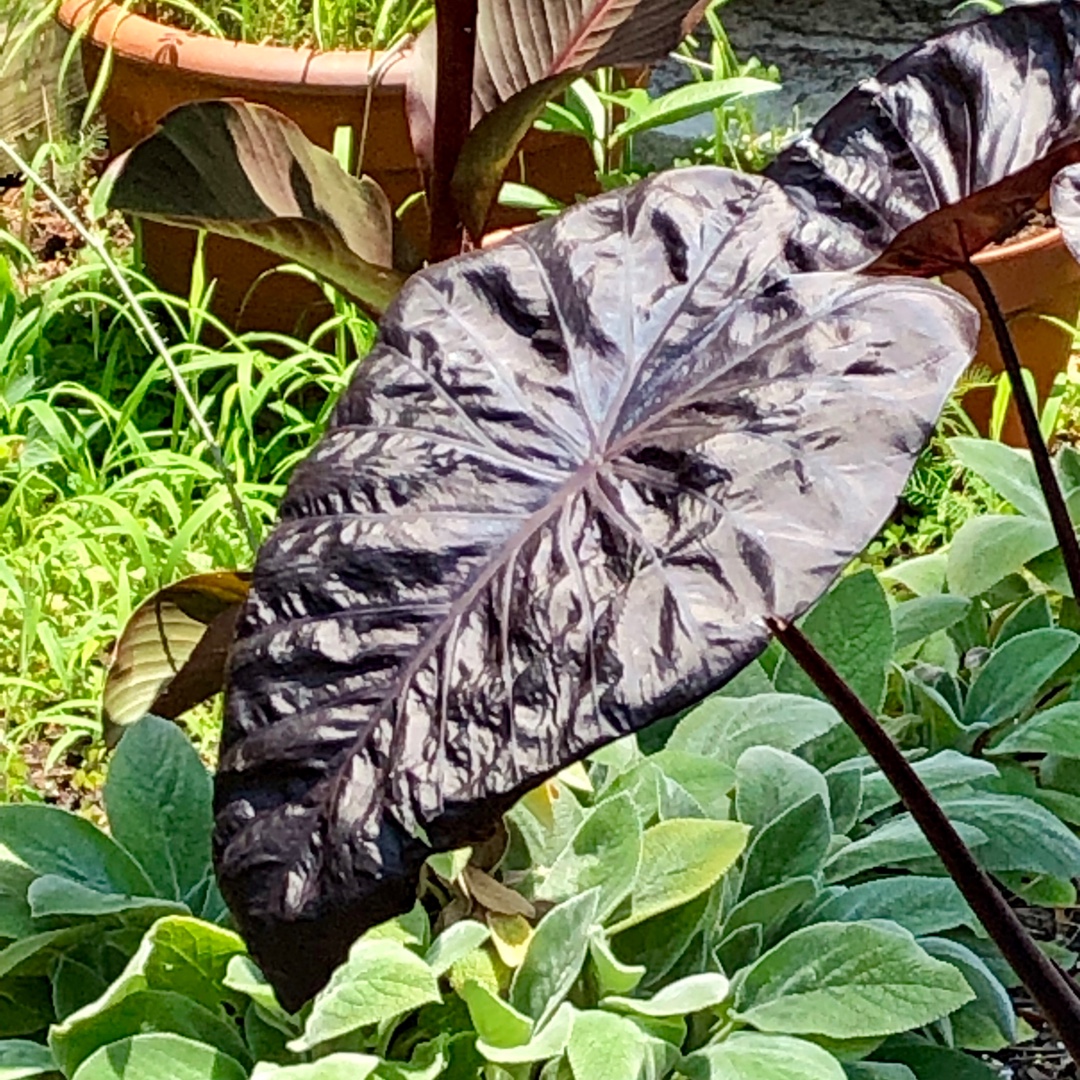
Colocasia esculenta 'Black Sapphire Gecko' (Gecko Series)
Elephant Ear 'Black Sapphire Gecko'
The elephant's-ear plant gets its name from the leaves, which are shaped like a large ear or shield. It is relatively easy to grow in the UK during the summer months. During the winter, it is best potted up and kept indoors under glass, keeping it dry and frost-free. Stop watering from late autumn through to Spring to ensure the tubers don't rot. This plant contains an irritant which causes intense discomfort to the lips, mouth and throat. 'Black Sapphire Gecko' is from the Gecko series and has dark glossy black leaves with dark maroon stems.
Contributed by @trishjordan13515
-
Partial shade
-
Frequent watering
-
A little frost hardy: 32F (0°C)
-
Moist and rich
Common name
Elephant Ear 'Black Sapphire Gecko'
Latin name
Colocasia esculenta 'Black Sapphire Gecko' (Gecko Series)
type
Herbaceous Perennials
family
Araceae
ph
5.5 - 7.0 Acid - Neutral
Plant & bloom calendar
-
Best time to plant
full grown dimensions
 1.20 M
1.20 M
1.20 M
1.20 M
Colocasia esculenta 'Black Sapphire Gecko' (Gecko Series)
The elephant's-ear plant gets its name from the leaves, which are shaped like a large ear or shield. It is relatively easy to grow in the UK during the summer months. During the winter, it is best potted up and kept indoors under glass, keeping it dry and frost-free. Stop watering from late autumn through to Spring to ensure the tubers don't rot. This plant contains an irritant which causes intense discomfort to the lips, mouth and throat. 'Black Sapphire Gecko' is from the Gecko series and has dark glossy black leaves with dark maroon stems.
Planting
From Early Spring TO Early Spring
Elephant ears should be planted slightly deeper than they grow as they will push up. During the growing season, Colocasia will continually produce new leaves as the older leaves continually die off.
Propogation by seed
From Early Spring TO Early Spring
Colocasia can be propagated by seed or division. If sowing seed, germination should take place within 21 days.
Propogation by division
From Late Autumn TO Late Autumn
If propagating by division, you can divide the larger tubers or separate the new plantlets that form at the rhizome tips.








